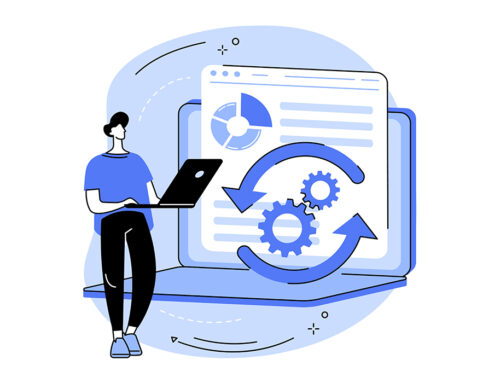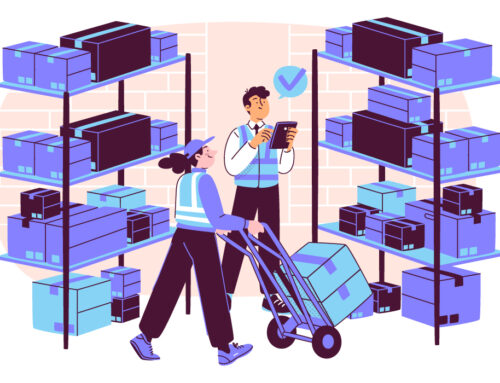For years now, economic growth around the world has allowed companies to do a “good enough” job with a “good enough” process. However, that growth is on a downturn, demanding companies to patch up their ship or risk sinking with the market.
Author Nick Saraev

Photo: Freepik
In order to make those improvements happen, teams must be more than agile and dynamic. They also need to put in the work to link their pricing strategy to the execution of all their commercial actions. If everyone within your organization starts to do their own thing, the best pricing strategy imaginable will not be worth a penny.
To help you get your company in ship-shape, we heard from Stefan Sandelescu of Zilliant at our recent conference, Manufacturing Pricing Excellence. He provided some insight on recession-proofing any pricing strategy for continued resilience.
Hallmarks of a Strong Pricing Strategy
While pricing strategies will be as diverse as the companies using them, there are a few things that every team should strive for when it comes to staying firm through inflation.
- Ultra-Specific Pricing – Where generalizations worked in the past, you must be prepared to get specific about what things are priced at and why
- Clear-Cut Overrides – Your entire team needs to know what concessions they can make and how much wiggle room they have for negotiations with customers
- Avoiding Cost Volatility – Work with your suppliers and customers to keep prices from fluctuating too heavily, and have a plan to mitigate the shifts
No matter what is happening in the broader market, your customers will still expect three core things.
- The Right Price – This may shift with inflation and customer expectations
- Consistency – Discovering that different locations or sales reps offer different prices reduces confidence in your product
- Speed – Companies can’t be behind on pricing changes, they need to happen right now
As wonderful as all these sound, they are ultimately easier said than done. There is no crystal ball that can magically show you exactly what prices you need to be setting for success. The only way to ensure your team can provide all this for your customers.
Why Do Pricing Problems Happen?
In order to improve upon your pricing structure, you have to understand where the silos and issues are coming from. Only then can you find ways to improve upon the system.
Sandelescu broke down a few of the most common challenges for B2B businesses looking to update their pricing model.
Challenge One: Localized Pricing Logic
Chances are, pricing is spread across several systems within your company. It may look a little like this:
- E-Comm – The listing price is the same for everyone who sees it
- CPQ – The price will be affected by different automatically applied discounts
- ERP – You may have a specific price for different customers or locations
When these systems are 100% distinct from one another, every time the needs of the market or supply chain shift, you need to deal with three different processes and sets of shareholders. This fundamentally challenges the need for consistency and speed.
The Solution: Omnichannel Consistency
You need to be able to quickly change prices across these channels if an issue arises like a competitor’s price plummet or inventory scarcity.
Centralizing your pricing logic allows you to quickly shift things across these channels without having to involve multiple stakeholders and pull together people across teams. You should be able to sync up these prices on a weekly – or even daily – basis.
Challenge Two: Over-Generalized Pricing
Many companies operate with a pricing structure that has an almost trickle-down effect. They start with a listing price that is consistent across the board. This price is set for all customers and all products, so has virtually no context and will seldom be used on its own.
The second level of pricing takes effect when you know the customer group or product context. For example, if the listing price is $100, you may bring it down to $88 for those in the construction industry, or offer a 30% discount for anyone in the automotive industry.
This is an extremely simplified version of this level, as it often requires access to multiple points of customer data, product data, and different attributes. When you get into customer-specific pricing and agreements, this segmentation gets even more complicated.
This system becomes an issue when you need to make any changes to prices. Adjusting any of the steps requires adjustments across the board, so you always end up working with the most granular data available to work your way back up and find what the new listing price should be.
The Solution: Tailoring the Right Price
Instead of working from a largely useless listing price that is consistently modified throughout the pricing process, work to create data-driven, context aware pricing logic. This should encompass
- Historic Transactions and Master Data
- Current Costs and Future Costs – This includes raw materials, energy, and labor
- Market Data – Consider market share, demand forecast, and competitive prices
- Inventory and Capacity
- Business Objectives
When you have a centralized way to adjust and analyze prices, you are able to take all of this data and make it actionable. You may not have every single data point effect the ultimate cost of your products, but you should have the knowledge and option.
Best Practices for Reactive Pricing
The complexity of data-driven pricing can quickly become overwhelming when you are just starting to make the shift. However, there are core tenants that you can keep in mind to guide you and your team on the journey.
Start Early
This kind of overarching system can take a long time to build and perfect. As the market continues to shift, it will only become more imperative that your team has a plan in place for keeping prices consistent.
Instead of waiting for the need to fully arrive, start creating your pipeline now.
Track Margin Leakage
With all the data at your fingertips, you will be able to clock any areas within your business that are shrinking your profit margins. Having a bit of padding in those margins will allow you and your team to keep prices consistent for longer, so make sure you find solutions when they appear.
Prioritize Agility
The perfect pricing system will allow you to make enterprise-wide changes in an instant. When building your system, keep in mind that everything needs to be interconnected and run smoothly. This will allow your entire team to react to any sudden changes in supply, market share, or competition.
In Conclusion
Volatile market conditions can make it nearly impossible to keep your prices consistent and relevant. However, if you take the time to create an overarching system that allows you to connect your entire pricing network and make data-driven decisions about its state, you can quickly respond to changes as they happen.






























